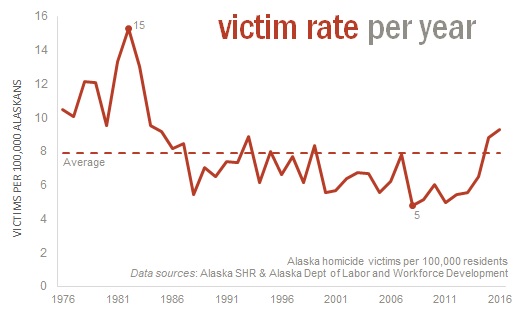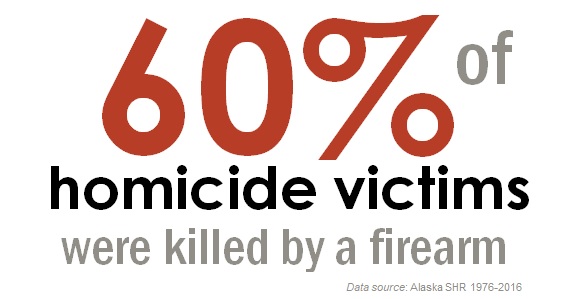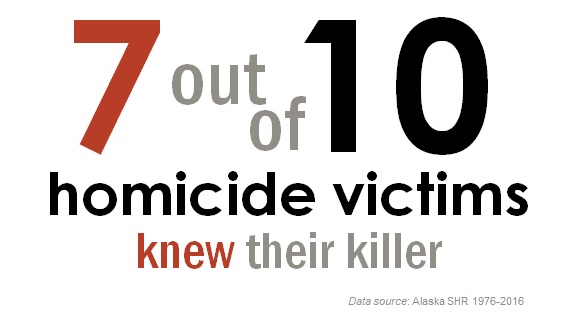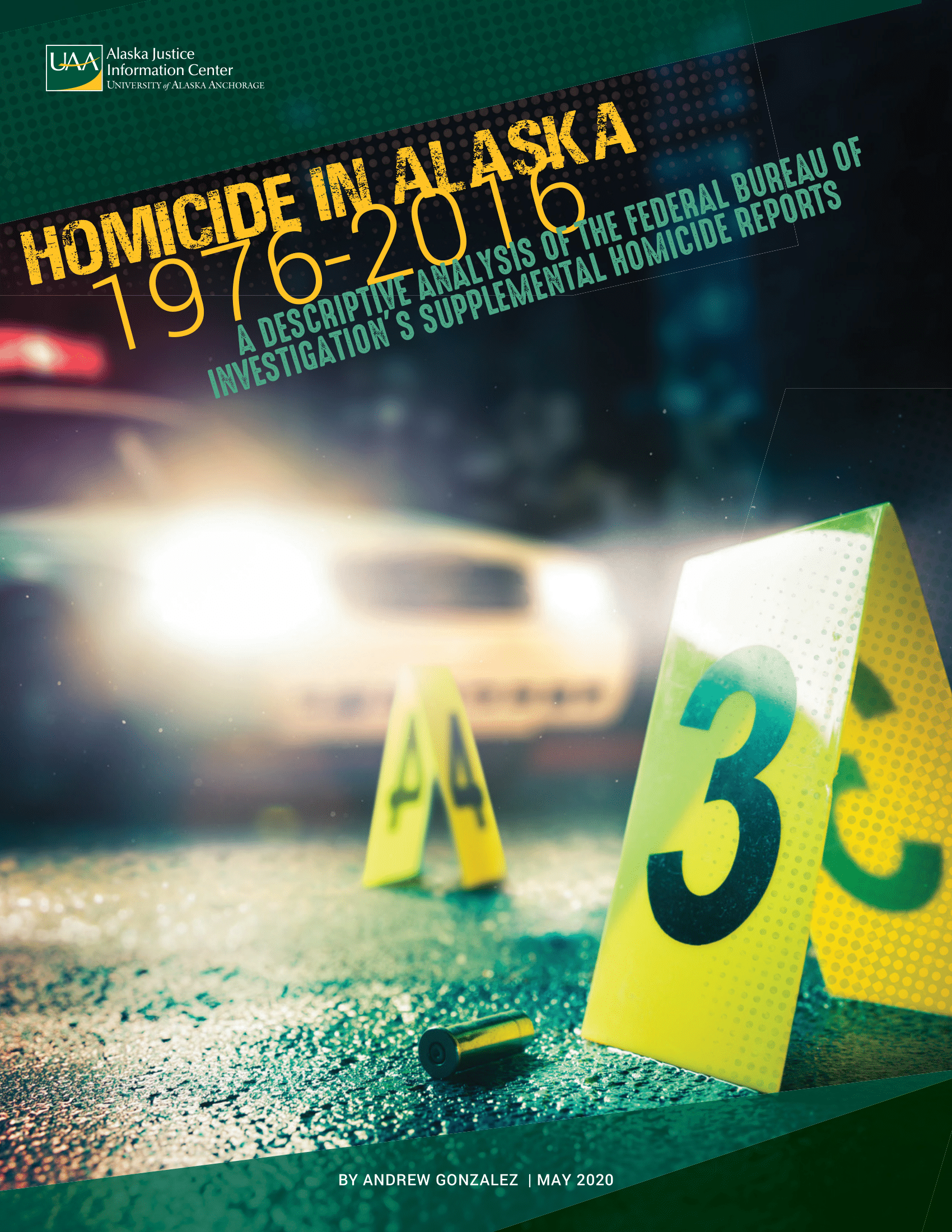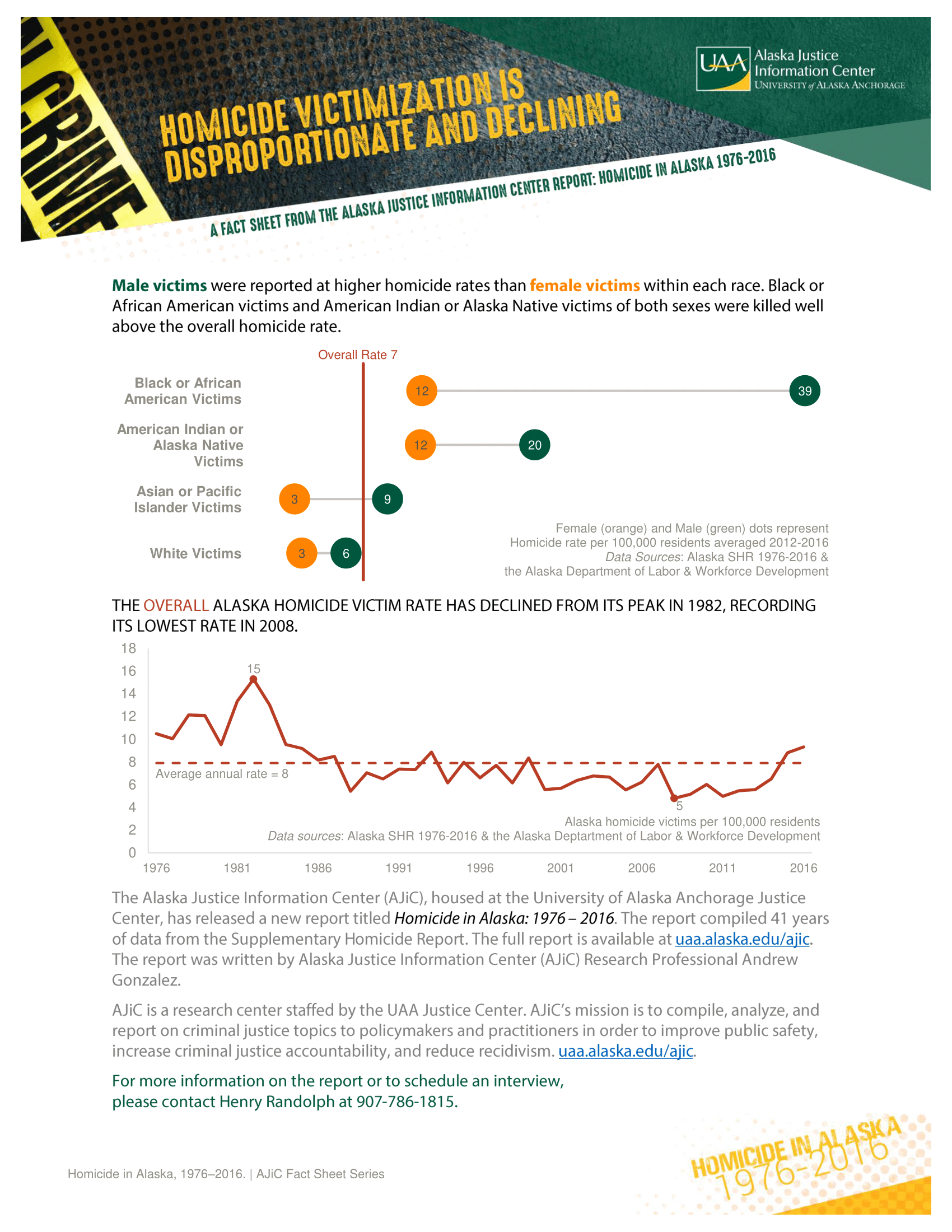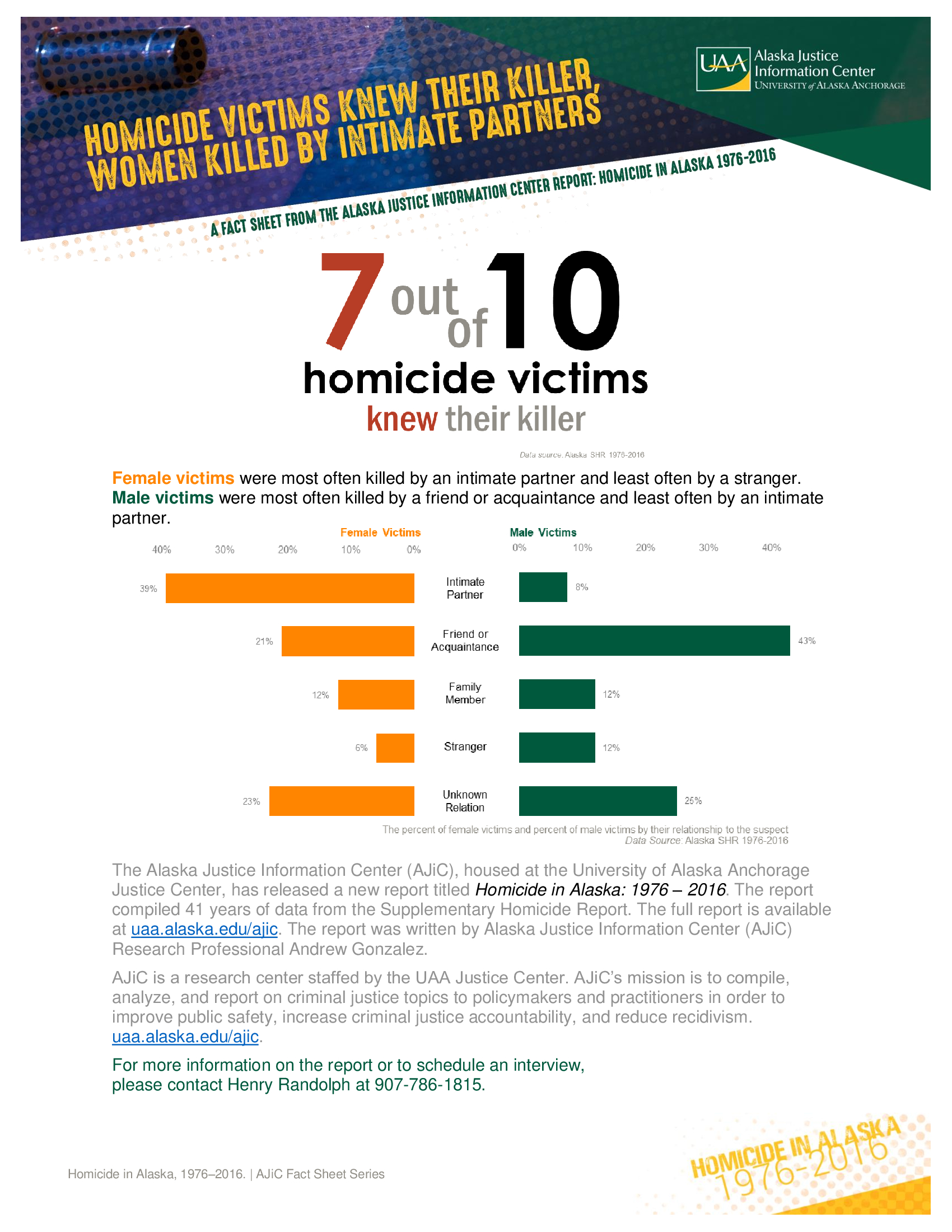Homicide in Alaska
The Alaska Justice Information Center (AJiC) has released a new report titled Homicide in Alaska: 1976 – 2016. The report compiles 41 years of data from the Supplementary Homicide Report (SHR), published annually by the Federal Bureau of Investigation as part of the Uniform Crime Report (UCR). This is the first time these data on homicide in Alaska have been examined across a multi-year timespan. AJiC has published a full descriptive analysis, three Fact Sheets, and new Data Dashboards.
For more information on the report or to schedule an interview, please contact Henry Randolph at 907-786-1815.
Homicide in Alaska Full Report, May 2020
See Full List of Publications Below
Homicide in Alaska: 1976-2016
AJiC's Homicide in Alaska: 1976-2016 report used the data in the Supplementary Homicide Reports (SHR) to document foundational characteristics of homicide in Alaska. Among other findings it details homicides over time, the distribution across Alaska law enforcement agencies, the weapons used in homicide, circumstances surrounding homicides, demographic qualities of victims and suspects, and the relationship between victims and suspects. The analysis moves forward our understanding of Alaska homicide by examining homicide characteristics as they differ between different victim groups. The report shows how homicide differs by the race, the sex, and the combination of race and sex of the victim.
Key Findings
- Compared to their representation in the Alaska population, American Indian or Alaska Native and Black or African American residents were twice as likely to be victims of homicide.
- The homicide rate peaked in 1982 (15 victims per 100k residents).
- The homicide rate was its lowest in 2008 (5 victims per 100k residents).
- Black or African American males were the race-sex group most often killed with a firearm (78%).
- American Indian or Alaska Native females were the race-sex group least often killed with a firearm (36%).
- Women were killed the most by intimate partners (40%), least often by strangers (5%).
- Men most often by friends/acquaintances (42%).
Publications
Full Report: Homicide in Alaska 1976-2016
The full 68-page descriptive analysis of the Federal Bureau of Investigation's Supplementary Homicide Report (SHR) between 1976 and 2016.
- Includes 31 tables and eight figures
- Describes homicide incidents, victims, and suspects
- Presents homicides by circumstance, weapon use, reporting agency, relationship between victim and suspect, and more
- Differences by race and sex are examined for all homicide characteristics
Victimization Homicide Fact Sheet
A single page Fact Sheet presenting data on Alaska Homicide victimization.
- Shows the homicide victims per 100,000 Alaska residents by the race and sex combination of the victim.
- Presents the number of total homicide victims per 100,000 Alaska residents between 1976 and 2016.
Firearm Homicide Fact Sheet
A single page Fact Sheet presenting data on firearm use in Alaska homicide.
- Shows the percent of Alaska Homicide Victims killed by a firearm
- Presents how firearm use varies among homicide victims by unique race and sex combination.
Relationship Homicide Fact Sheet
A single page Fact Sheet presenting key findings on the relationship between homicide victim and offender.
- The proportion of homicide victims who knew their killer
- How the relationship between victim and suspect was different between female victims and male victims
Homicide Victim Relationships Dashboard
An interactive data dashboard showing the percent of Alaska Homicide Victims by their relationship to the Homicide Suspect.
- The percent of victims by their relationship to the suspect separated by the sex of the victim.
- The user can filter by the Race and Age of the victim to examine different victim demographic combinations.










